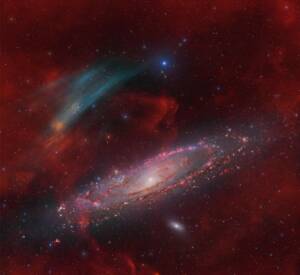
Discovery of the M31 [OIII] emission arc
Recently, a major discovery by an international team of amateur astronomers and scientists has become a huge online hit, and this new discovery is just located in one of the
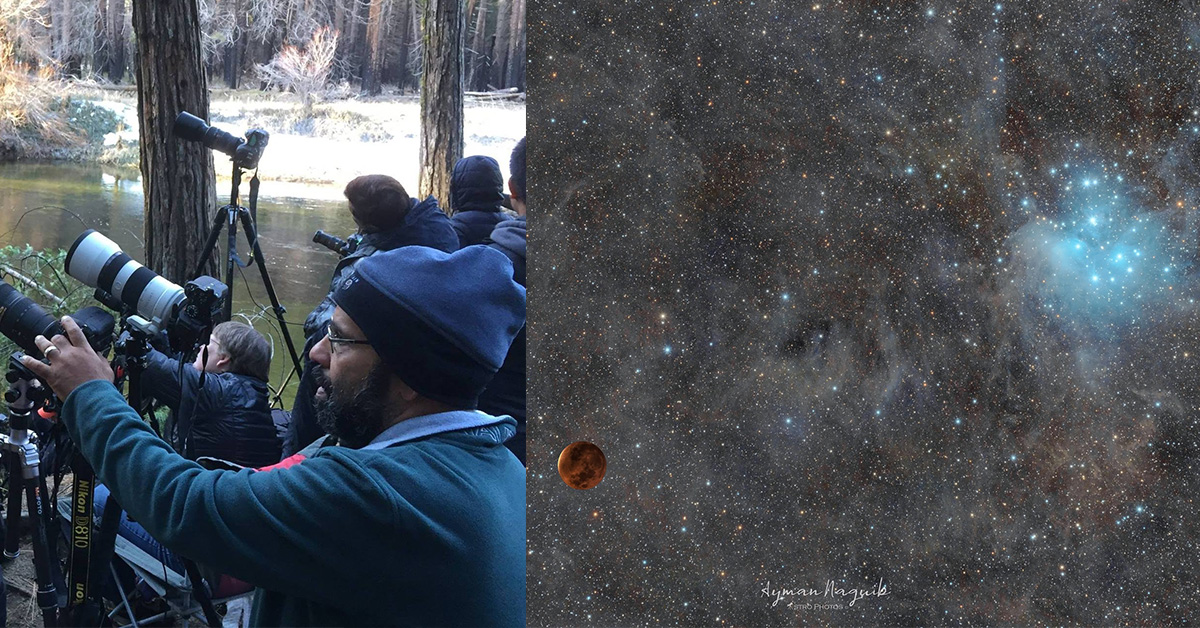
Thank you very much for selecting my picture and for the interview. It is a great honor. My name is Ayman Naguib, and I am 57 years old. I live in Cupertino, California. I have been working in the wireless communications field for the past 27 years. I currently lead a small research team in one of the large technology companies in the Bay Area. I am married and have four children.
My number one passion is photography in general. My father was a professional photographer, and I got my love for photography from him. Before getting into Astrophotography, I loved doing landscape and underwater photography. I love hiking, backpacking, and scuba diving.
Perhaps the best way to describe why I love astronomy and astrophotography is that they are humbling. Looking at the stars is where I feel closest to God. Ralph Emerson said in his Nature book “If the stars should appear but one night every thousand years how man would marvel and adore”. This is exactly how I feel.
I started astrophotography about 4 years ago. It started while I was on a backpacking trip to the Emigrant Wilderness in the Sierra Nevada mountains. I was in awe looking at the night sky with no light pollution. So, my first attempt at astrophotography was a timelapse for the Milky Way which came out nice. I was so thrilled with the result such that I started focusing on making the night sky part of the landscape pictures that I was capturing during my backpacking trips. I also started driving to nearby dark sites that would allow me to take pictures for the night sky with my DSLR camera and tripod. I then got the SkyWatcher Star Adventurer and tried taking pictures with a DSLR mounted on it and got decent results with it. Then in the summer of 2018, I had an 8 day long backpacking trip to hike Mount Whitney. During that trip I spent 7 nights under the stars with no light pollution whatsoever. It was an unbelievable experience. I spent a couple of months after the trip talking to my family about it. By end of summer, my wife got me a telescope (it was a Maknewt reflector) and a mount as a birthday gift. I started first doing visual astronomy looking at the moon and planets. A couple of months later I took my first picture through a telescope with my DSLR which was a picture for the moon. I then decided to buy a small refractor
which was the SkyWatcher Esprit 80 by January 2019. That is when I took my first DSO image which was for the M42. It has been a deep dive since then.
Here are some of my gear/equipment:
Mounts:
SkyWatcher EQ8-R pro and EQ6-R pro which I use from my backyard (see pictures)
SkyWatcher AZ-EQ5 and AZ-GTi which are my portable setups that I use at remote sites
Telescopes and Lenses:
SkyWatcher Esprit 80, Esprit 100, Esprit 120, and Esprit 150
Samyang 135mm, Askar 200 lens
I also just received my new C11HD but did not have a chance to use yet
Cameras: ASI183MC Pro, ASI294MC Pro, ASI294MM Pro, ASI2600MC Pro, ASI2600MM Pro, ASI2400MC Pro, and ASI6200MC Pro
Guide Scope: ZWO 30mm guide scope, SkyWatcher Evoguide 50
Guiding Camera: ASI290MM Mini and ASI120MM Mini
ZWO Gear: ASIAIR PRO, ASIAIR Plus, EAF, 7-position EFW, ZWO OAG, ZWO 1.25″ Helical Focuser
GEAR 1: AZ-EQ5, Askar 200 F/4 astro lens, ASI6200MC Pro, WO 30 mm guide scope, ASI290MM Mini, ASIAIR PRO
GEAR 2: EQ6-R Pro, SW Esprit 100, ASI183MC Pro, SW Evoguide 50 mm guide scope, ASI290MM Mini, ASIAIR PRO
GEAR 3: EQ8-R Pro, SW Esprit 150, SW 0.7xx reducer, ASI2600MC Pro, SW Evoguide 50 mm guide scope, ASI290MM Mini, ASIAIR Plus
GEAR 4: EQ6-R Pro, SW Esprit 100, APEX-L 0.65x reducer, ASI2600MC Pro, SW Evoguide 50 mm guide scope, ASI290MM Mini, ASIAIR PRO
I actually did not do a lot of planets yet. I have taken one picture for Jupiter and one for Saturn (and many for the Moon of course) which turned out to be OK. I am hoping with the addition of the EDGE HD11 to my gear, I will be able to get better pictures of the planets. However, I have been mainly focusing on DSO imaging. I feel that the quality of my images has been improving, especially since I started using narrowband filters. My first narrowband image was for M16 which was taken with ASI183MC and Esprit 120. I have always admired that iconic Hubble image for M16, and I was thrilled to capture my own. I am still shooting using OSC and Light pollution and duo-narrowband filters (Optolong L-Pro and L-eXtreme). However, I recently got a couple of monochrome cameras (ASI2600MM Pro and the ASI294MM Pro) and a ZWO EFW. My focus for 2022 will be on monochrome imaging.

In general, I like to take widefield astrophotos. This year we were lucky because there were two Lunar eclipses that happened in very interesting parts of the sky, and I was able to capture both. The first lunar eclipse that happened in May was a good training exercise for the second one. I used the same technique in capturing both. First step was to capture the background starfield that will be behind the moon during the eclipse two weeks before the eclipse i.e., when the moon is just born. For this part, I used the Askar 200mm lens paired with the ASI6200MC Pro and the Optolong L-pro filter. The data for the Pleiades and the surrounding dust cloud was captured over three nights from a camp site 20 miles outside of Zion National Park. For the lunar eclipse, I imaged it from my backyard using the Esprit 100 paired with the ASI183MC and the Optolong L-Pro filter. I made sure that both cameras have the same rotation angle. I processed both the foreground lunar image and the background starfield image separately. The next step was to scale down the foreground lunar image so that it had the same image scale as the background starfield image to produce the final composite.
I think that for me, given that I take most of my pictures from my backyard in the heart of the Bay Area (Bortle 6 skies), the most difficult part is the ability to properly deal with the light pollution and gradients. I don’t get the chance to drive to remote sites quite often, so I had to learn (still learning) how to deal with light pollution. Using duo-narrow band filters has been extremely helpful. I must also be very picky when I capture broadband targets in order to minimize the impact of light pollution. From my backyard, there is a lot of light pollution looking east/northeast in the direction of San Francisco. However, there is much less light pollution when looking southwest/west in the direction of the Santa Cruz mountains. So, I plan my shooting sessions accordingly.

I normally spend 6 hours per photo on average for post-processing after acquiring the data. This includes the stacking process which I normally do using Astropixelprocessor and the post-processing which I do using Pixinsight and Adobe Photoshop. I feel there is still a bit to learn in both Astropixelprocessor and Pixinsight to take advantage of all they offer. I do spend a lot of time watching YouTube videos on how to use both these two software packages. Gradient removal and color calibration are still a bit of a challenge for me.

The ASIAIR has been a game changer for me astrophotography-wise. It makes setting up very easy. But perhaps the biggest two features that I benefited from the most are the AF using the EAF and the Autorun/Plan features. Both features allow me to set up and start the imaging sessions very quickly and go back home and be with the family or continue working. I consider them a marriage saver 😃.
I think it was a good move for ZWO to add the external antenna in the plus version. However, there are several features on my wish list that I hope ZWO would consider adding them to the ASIAIR software or future version of the ASIAIR. The top ones are: In-app mosaic planning without being connected to the device, multi-camera support, and equipment profiles. Also, I feel the AF accuracy and speed can be improved.

This has been the toughest part about astrophotography until I started using ASIAIR. My day job is too demanding and initially I limited my astrophotography to weekends or whenever I had time off. However, using ASIAIR as part of my setup made the data acquisition part of astrophotography much less demanding on my time. Processing still presents a challenge, and I must plan the time for it. As a result, there is always something on my hard drive waiting to be processed.
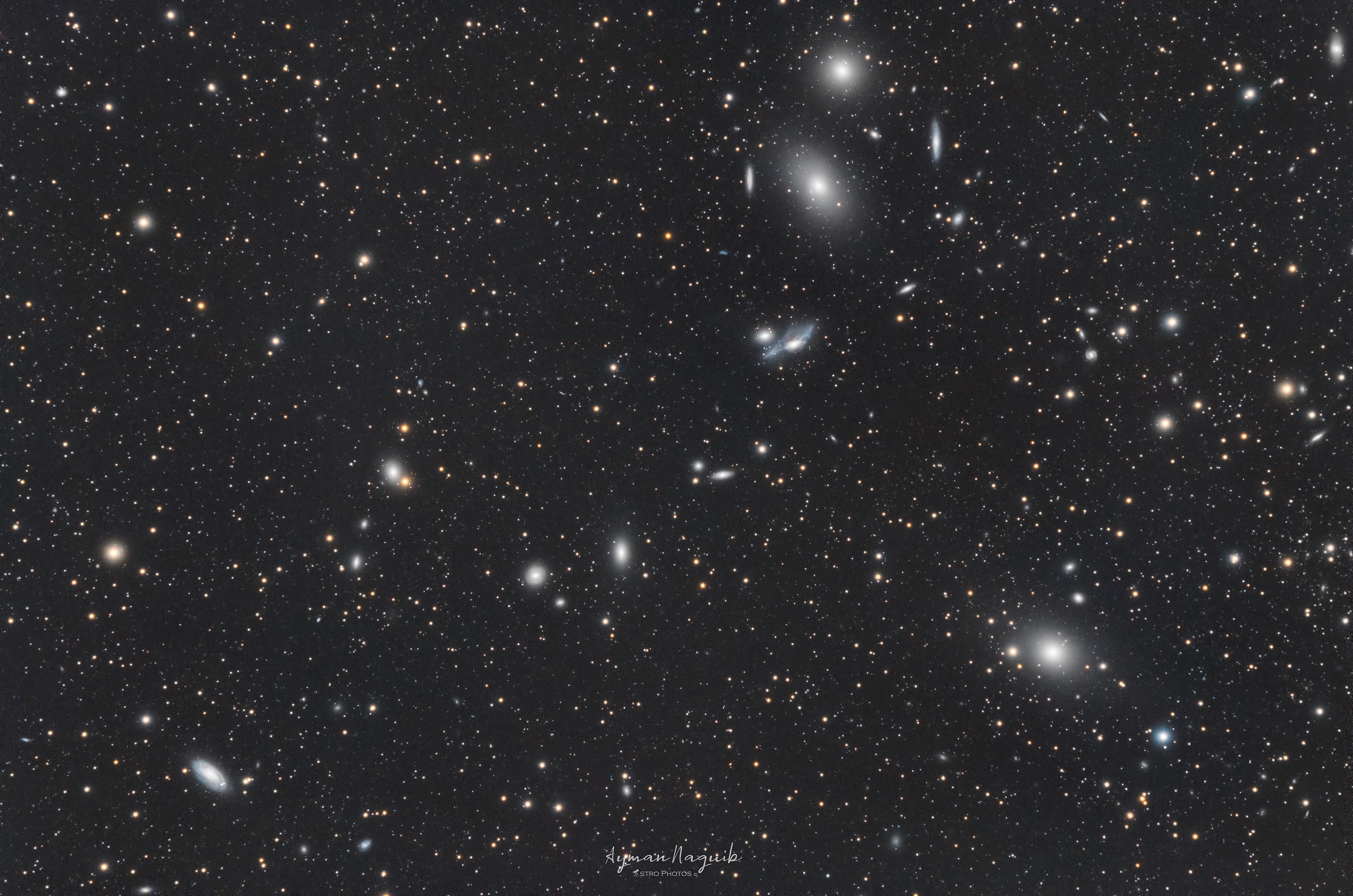

I feel there is still room for new innovations to improve astrophotography and how we deal with light pollution. For example, on sensor pre-processing to learn and reduce the light pollution as suggested by recent several image processing publications.

Actually, yes and a lot. First, it was my wife who got my first telescope and mount. Also, a few times I had to drive to a remote site to take astrophotos, and my wife and my children came with me to give me company. In fact, I do give my wife a lot of credit for the picture of “Lunar Eclipse and The Pleiades”. I was planning to shoot that image from my backyard in California. However, my wife and daughter wanted to go to Zion National Park, but she wanted to drive there. It is a 700-mile-drive from where we live in California. She insisted that I go with them (I did not want to do the 700-mile drive). That allowed me to take my mount and full gear and shoot The Pleaides and surrounding star field from a very dark site outside of Zion National Park (Bortle 3 skies).

Sometimes I may have three setups running in my backyard, so I have quite a few ASI cameras. I have two ASI2600MC Pro, ASI2600MM Pro, ASI294MC Pro, ASI294MM Pro, ASI183MC Pro, ASI6200MC Pro, and ASI2400MC Pro. My work horse has been the ASI2600MM Pro. The sensor size plus the pixel resolution makes a perfect fit for many of the targets. I use the other cameras for specific applications/targets.

Take your time learning/experimenting before you take the deep dive into astrophotography. And if you are not the patient type, learn how to be patient. But perhaps the one key advice that was told to me by a close friend is that image acquisition is half the battle in astrophotography. Processing the data is the other and most important half. You can own the most expensive astrophotography gear ever invented by mankind. If you don’t know how to process the data, that expensive gear is useless.
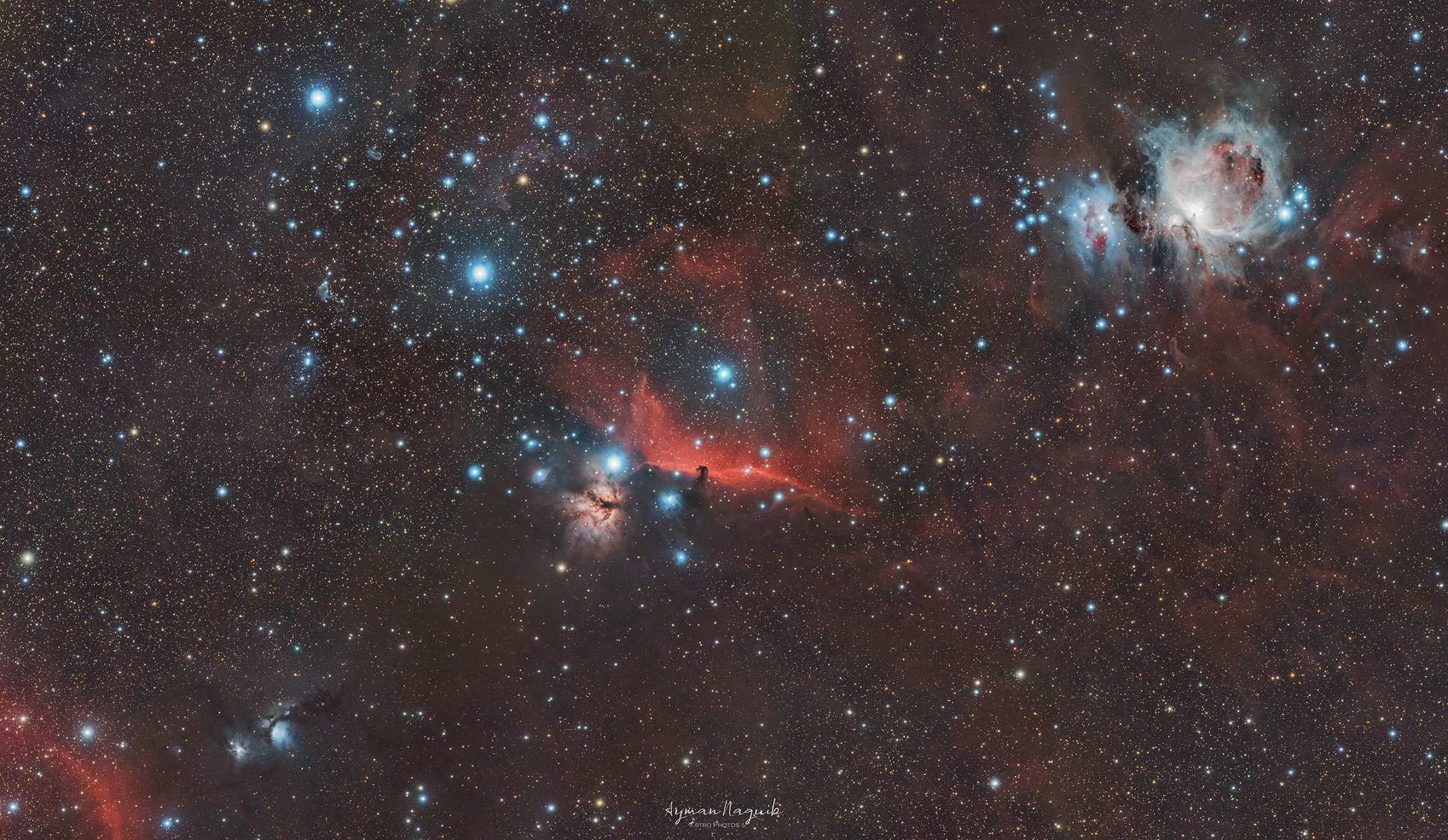
I think that for 2021, one of my main goals was to capture both Lunar Eclipses in a way that reflected the way they happened in the sky and I was lucky to achieve that. Also, this year, I was able to capture several galaxies, nebulae, and globular clusters. I am more than halfway in capturing the targets in Messier catalog. My goal for 2022 is to perhaps finish capturing all the Messier objects. Also, an important goal for me in 2022 is to do monochrome imaging.

Needless to say, many people who do astrophotography enjoy the cooled cameras from ZWO. But I think the one thing that sets ZWO apart from other technology providers in astrophotography is their eco-system view of the whole thing centered around the ASIAIR. This has been a game changer for me.
I hope that ZWO will consider introducing an electronic field rotator and an EAF with more precision. Most importantly, it will be great if ZWO can establish other service/repair facilities outside of China to reduce the turnaround time when items need to be sent for repair.

Thank you very much for the interview opportunity.

Recently, a major discovery by an international team of amateur astronomers and scientists has become a huge online hit, and this new discovery is just located in one of the
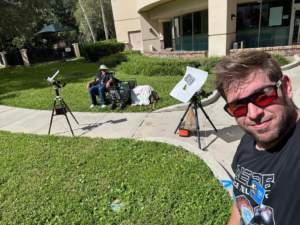
That 11-year-old boy staring at Horsehead Nebula photo would never have imagined… Decades later, he’d be capturing amazing deep-sky images from his Florida backyard! “ It was amazing to see

Hello,Sara Harvey,thanks for accepting our interview invitation. Congratulations on winning the ASIWEEK competition in week! Q1: At first, congratulation that your nice image won #ASIWEEK. Can you introduce yourself to
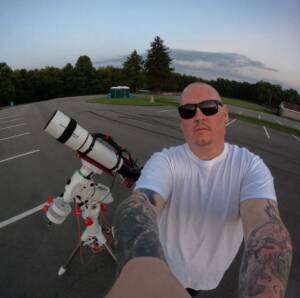
Astrophotography is more than just capturing images of the night sky—it’s a journey of discovery, patience, and creativity. For this passionate astrophotographer, what started as a chance encounter with a
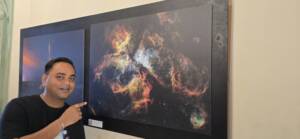
Taranjot Singh, an Indian origin Australian astrophotographer who is making waves on the international stage. Taranjot has been recognized as one of the Top 5 finalists in the prestigious Siena
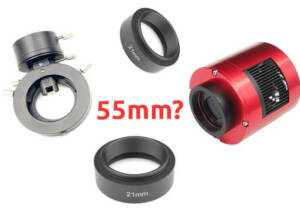
The back focal length is advised by telescope manufacturers. Since most telescopes have a 55mm back focal length, we are here to provide detailed instructions for all ASI cooled cameras.Please
1 Comment
Omar A
Wonderful interview and incredible photos! 🙂